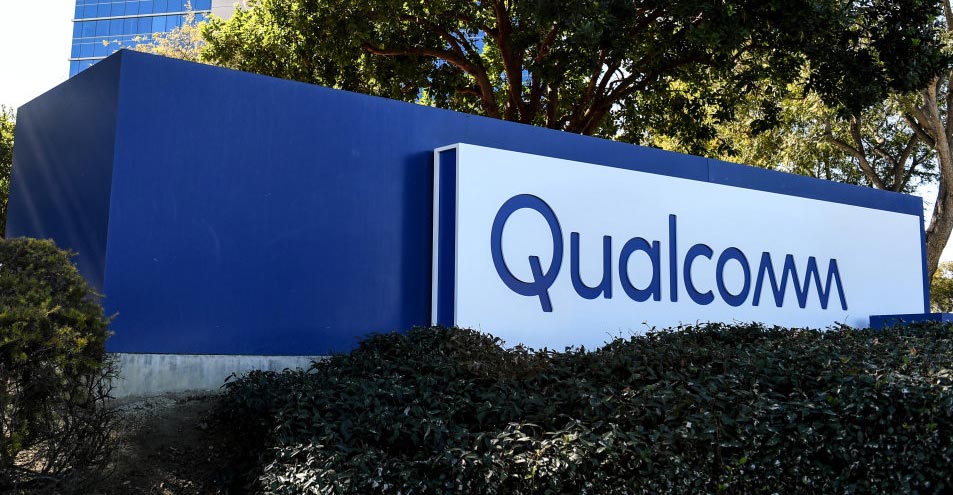Qualcomm’s investor day was last week and its CEO Cristiano Amon made a comment I disagree with, though the outcome to Qualcomm is the same or better. Amon said everything is going mobile, but I don’t think that is correct.
I argue instead that everything is becoming cloud-connected. I also suggest that this cloud-connected capability favors Qualcomm even more than the mobile aspect of this trend because the cloud is a centralized resource. This shifts the importance of processors at the edge to modems at the edge.
Most of the cameras and sensors rolling out en masse are not mobile. Still, they’re not wired, which means Qualcomm’s market-leading connectivity technology is becoming more critical than the processors in these devices which increasingly use cloud processing power.
Let’s talk about this trend and what it means to you. Then we’ll close with my product of the week, the Lenovo ThinkVision M14t Portable Monitor.
Mobile vs. Cloud
This focus on the cloud isn’t to say mobile isn’t essential and growing, but as we look at solutions like advanced driver-assistance systems (Qualcomm just announced a huge ADAS deal with BMW), a lot is tied to cars and mobile. But some of the downsides to this solution are remote charging (most of the advanced autonomous vehicles will be electric), road sensors, stoplight sensors, weather sensors, and cameras; all of which are not mobile.
This cloud focus doesn’t mean processors won’t be essential, but the increasing bandwidth needs of this cloud advancement appear to be the gating factor for new innovative projects. For instance, remote cameras use AI to selectively send a subset of the data so that bandwidth isn’t overcome with too much data. Yet the problem with being selective is that critical information may be lost.
For example, if the AI in a camera is set to only alert and send video when a non-employee is in range of the camera. What if an employee shows up at a plant site armed and upset about being laid off, getting a bad review, or because they’ve been bullied? The camera doesn’t send the video because it recognizes the employee and doesn’t recognize the threat.
So you set to look for a gun, and the employee shows up with a bat or knife; the system may not flag the problem until someone is harmed and may not have captured the event so that security or the police can respond timely.
I had an experience like this recently with my Arlo cameras. They were set to flag people approaching our house, but our cats got out, and those set to flag people didn’t capture the cats, which could have been problematic.
Let’s take another example I ran into at Amazon.
A few years back, Amazon was getting a lot of complaints about slow deliveries, but reporting indicated everything was arriving on time. When a forensic analysis company was brought in, it found that a central distributor, which wasn’t supposed to ship directly to an end customer, was indeed shipping to those customers, and the shipments were consistently late.
Amazon corporate was unaware of the problem because the central distributors weren’t supposed to do this, so their automated data reporting system didn’t flag the behavior. The information that wasn’t being sent to corporate was critical to diagnosing and correcting the problem.
Qualcomm’s modem capability increases available bandwidth, so our need to be selective with that data being sent will be reduced. This reduction should also reduce the amount of unintended bias in the solution, resulting in better results.
Decisions made on biased results are far more likely to be wrong. When you are bottlenecked on bandwidth, the technology that relieves that bandwidth is on the critical path, which gives Qualcomm a significant competitive advantage.
Cloud PC
Ever since we moved off of mainframe computers, we’ve been trying to move back, probably because terminals are more like TVs than PCs, and users are far less involved in the care of TVs than PCs. With mainframes, the service, software update, and hardware update processes were all handled centrally.
Whether for gaming or productivity, the market is now exploring Windows Virtual Desktop, where your operating system and apps run in the cloud. The advantages of this approach mirror the advantages of mainframes and terminals. You can get access to the performance you need without upgrading your PCs, and all of the maintenance processes are handled by the cloud provider.
This increasing emphasis on the cloud for performance shifts focus from pure performance to battery life on the endpoint device.
Qualcomm-based laptops have the advantage because they are designed to optimize battery life, not absolute performance. They are still fully capable of fielding productivity apps, entertainment apps (though not top-level games), and whatever you do on the web. For anything requiring performance, you use cloud services which provide the advantage of near-unlimited capabilities with little impact on battery life.
As we move into this new cloud-connected world, Qualcomm’s focus on reducing power consumption increases its advantage.
The Metaverse
One of the latest trends is the multiverse and digital twins. But to make digital twins truly functional for simulation, these twins have to remain synchronized with their physical siblings.
This critical connection will require instrumenting the physical aspects of the world that are duplicated to ensure this synchronization is timely. However, it will also require users to wear some mobile visual interface to experience some of the AR overlays that the metaverse promises. In 2007, HP provided a kind of metaverse experience demonstration called Roku’s Reward. It remains one of the best demonstrations of bridging what is real and virtual into a compelling experience.
The headsets required for this experience, like the Occulus Quest, also use Qualcomm’s solutions to provide high performance and high-speed connectivity coupled with long battery life. Both the quality of the experience and the accuracy of the metaverse will depend on Qualcomm technology.
Wrapping Up
While mobility is a trend, the more significant course of events benefiting Qualcomm is the shift to remote processing, which leverages its modem market leadership and emphasizes its processor focus on power per watt.
The company is well-positioned for this new future that includes a move from the distributed, reality-based world to centralized computing, a virtually-augmented world defined by AI and the metaverse of the future.

Lenovo ThinkVision M14t USB-C Mobile Monitor
The ThinkVision M14t portable monitor at $384 isn’t a cheap date. Still, it proved capable of one convenient operation when I tested it: I could sign a document from a desktop computer that didn’t have a touch screen (doing a signature with a mouse sucks).
This monitor is touch-enabled and it comes with a pen. It has a 1080 resolution, a 14-inch form factor, and a 16:9 orientation so you can do full-screen streaming videos while working on your laptop screen.
Users who will make the most of this device will be those that need to interact with the screen while using a desktop PC or workstation or a laptop that doesn’t have a tablet function. This user group would include artists, reviewers (who use a pen), teachers grading digital documents, and lawyers or contract administrators who review digital contracts.
If you want a second screen, there are less expensive choices, but you can interact with it as if it was a tablet if you need something with that capability. The base allows you to switch from landscape to portrait if you want to vertically orient the document you are reviewing or the drawing you’re creating.
Another use of this monitor is a current-generation smartphone with USB-C, allowing you to expand the screen with full touch on your smartphone to 14 inches. Depending on how you use this monitor, you might be able to leave your laptop at home. With a Bluetooth mouse and keyboard, your phone can act as your computing device connected to Windows Virtual Desktop in the cloud.
As discussed above, this cloud-use case may be the way we work in the future. The ThinkVision M14t can help you explore that trend before it goes from how we will work to how we’re working now. It may be the ideal way to experience the cloud-connected virtual PC world of the future, and it is my product of the week.
(The ThinkVision M14t was available as of this writing. Supply shortages are plaguing the industry so availability might fluctuate.)














































